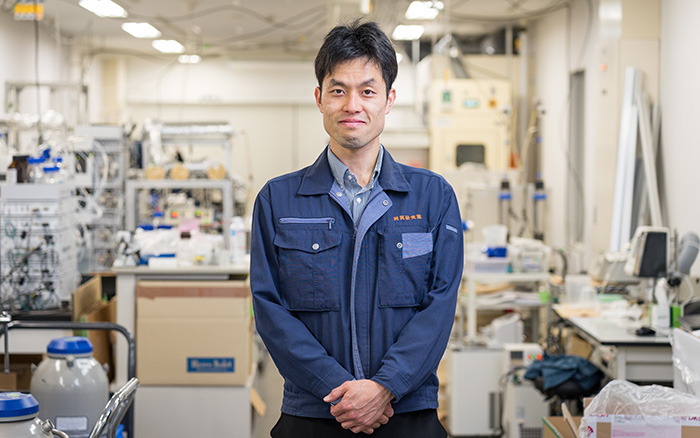

06/23/2025

Dr. Akira Yoko, the corresponding author of this research paper
Theory and indirect evidence have long predicted that reducing metal oxides to ultrasmall sizes (<5 nm) could lead to unexpected properties driven by structural and electronic changes.
However, unlike in metals and semiconductors, the effects of metal oxide size confinement have yet to be directly investigated, largely due to challenges in synthesizing ultrasmall metal oxide nanoparticles with narrow size distributions and high crystallinity.
“Conventional batch syntheses (where all reagents are mixed, heated, and reacted together in closed vessels under static conditions) often produce particles with broad size distributions and unpredictable properties because of uncontrolled side reactions and unsteady heating,” explains Akira Yoko, a member of an AIMR research team. “Therefore, a different synthetic approach is needed to probe the size effects of metal oxide nanoparticles.”
In a 2024 article, Yoko et al. addressed this challenge by developing a continuous-flow supercritical hydrothermal synthesis method that enabled precise control over nanoparticle size down to 1.3 nm1. The method was designed both to stabilize the nanoparticles using organic modifiers and to control the growth rate through reaction temperature and modifier concentration.
To achieve this, the team combined a flow-reactor process designed for rapid heating, with organometallic chemistry tailored to control how Ce is introduced to the reaction—enabling high conversion rates, fine size control, and reproducible synthesis of ultrasmall CeO2 nanoparticles.
The study revealed that CeO2 nanoparticles smaller than 4 nm exhibited dramatic lattice expansion and stacking faults resulting from particle coalescence during early-stage growth. Moreover, the team observed that even without oxygen vacancies, Ce3+ electronic states emerged due to oxygen disordering—a previously unreported phenomenon.
“Our findings are significant because they demonstrate that the structural distortion and electron localization observed in CeO2 nanoparticles arise from nanoscale effects rather than conventional defect chemistry,” says Yoko. “These results open new possibilities for tuning the electronic and catalytic properties of metal oxides by controlling size and growth dynamics at the atomic scale.”
We started out trying to understand the organic modification mechanism in hydrothermal reactions. That led us to study organic–inorganic complex chemistry and eventually improve the precursor for continuous-flow synthesis. What surprised us was that, by precisely controlling the reaction time—down to 40 milliseconds—we could continuously synthesize ultrasmall metal oxides, even smaller than 2 nanometers, which we didn’t expect. The biggest surprise was that these tiny particles had high crystallinity but still showed large structural distortion that caused electron localization without needing lots of oxygen vacancies. We also explored fusion growth, which was fascinating. This method should work for many other metal oxides.
(Author: Patrick Han)

This research highlight has been approved by the authors of the original article and all information and data contained within has been provided by said authors.